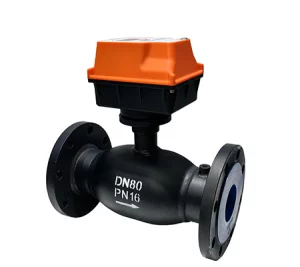Avoid your inquiry is delay response, please enter your WhatsApp/WeChat/Skype along with the message, so we can contact you at the very first time
We will reply you within 24 hours. If for urgent case, please add WhatsApp: +8613188899036, or WeChat: 0531-87968777. Or call 0531-87968777 directly.
* We respect your confidentiality and all information are protected. We will only use your information to respond to your inquiry and will never send unsolicited emails or promotional messages.
I often see building managers struggle with uneven heating and cooling in their systems. This common problem affects comfort and drives up energy costs significantly.
A circuit balancing valve controls and adjusts water flow in HVAC systems to ensure even distribution throughout the building. It maintains proper flow rates in each circuit, preventing some areas from getting too much flow while others get too little.

Carbon steel balance valve
As a valve manufacturer with 15 years of experience, I’ve helped countless buildings optimize their systems. Let me share what you need to know about these essential components.
Ever walked into a building where some floors are freezing while others are sweltering? That’s often due to poor valve placement. I see this issue frequently in my consulting work.
Balancing valves should be installed at every major branch point in the hydronic system1, including the return lines of heating/cooling coils, branch lines, and primary-secondary connections. This ensures proper flow distribution throughout the system.
| System Type | Recommended Location | Purpose |
|---|---|---|
| Primary Loop | Supply and return lines | Control main flow distribution |
| Secondary Loop | Branch circuits | Balance individual zones |
| Terminal Units | Return lines | Fine-tune local flow rates |
I recently helped a commercial building solve their temperature balance issues by correctly positioning balancing valves at key points. The improvement in system performance was immediate and dramatic.
I received this question from a facility manager last week after discovering inconsistent pressure readings in their system. It’s a valid concern that deserves attention.
Yes, pressure balancing valves2 can deteriorate over time due to wear, corrosion, and sediment buildup. Common issues include stuck mechanisms, worn seals, and calibration drift. Most valves last 8-12 years with proper maintenance.
| Factor | Impact | Prevention |
|---|---|---|
| Water Quality | Corrosion and scaling | Regular water treatment |
| Operating Pressure | Mechanical stress | Proper sizing and maintenance |
| Temperature | Seal degradation | Stay within specifications |
| Cycling Frequency | Mechanical wear | Regular inspection |
Through my experience working with various facilities, I’ve noticed that preventive maintenance significantly extends valve life. Regular inspections and cleaning can catch problems before they become serious issues.
In my decades of system design work, I’ve encountered numerous situations where balancing valves proved essential for optimal system performance.
Balancing valves are crucial in any hydronic system3 with multiple parallel circuits, like HVAC systems, district heating networks, and industrial cooling systems. They’re especially important in large buildings with complex distribution networks.
| Application | Purpose | Benefits |
|---|---|---|
| Process Cooling | Flow control | Consistent temperatures |
| Heat Exchangers | Load balancing | Optimal heat transfer |
| Chilled Water | Distribution | Energy efficiency |
| Hot Water Systems | Circuit balance | Even heating |
I recently implemented balancing valves in a 20-story office building that was struggling with uneven heating. The solution transformed their system efficiency and reduced energy costs by 25%.
This question reminds me of a recent troubleshooting call where subtle signs pointed to valve failure that wasn’t immediately obvious.
Common indicators of a failing pressure valve4 include unusual noises, inconsistent pressure readings, poor temperature control, and increased energy consumption. Regular monitoring and documentation of these symptoms help identify problems early.
| Symptom | Possible Cause | Action Required |
|---|---|---|
| Pressure Fluctuation | Worn components | Inspection needed |
| System Imbalance | Valve failure | Calibration check |
| Energy Waste | Poor regulation | Efficiency audit |
| Flow Problems | Internal damage | Flow testing |
My team developed a comprehensive diagnostic checklist after years of field experience. It has helped us identify valve issues before they cause system failures.
Throughout my career, I’ve learned that timing valve replacement5 correctly can prevent costly system failures and downtime.
A valve needs replacement when it shows signs of severe wear, fails to maintain proper pressure/flow, has visible damage, or reaches the end of its service life. Regular testing and inspection help determine the optimal replacement timing.
| Indicator | Warning Sign | Action |
|---|---|---|
| Response Time | Slow operation | Evaluate control |
| Flow Rate | Inconsistent | Check calibration |
| Pressure Drop | Excessive | Measure differential |
| Energy Usage | Increased | Audit efficiency |
I always advise my clients to maintain detailed maintenance records and establish clear replacement criteria based on both age and performance metrics.
Circuit balancing valves are crucial for maintaining efficient HVAC systems. Regular maintenance, proper installation, and timely replacement ensure optimal performance and energy savings. Understanding these aspects helps prevent system issues and extends equipment life.